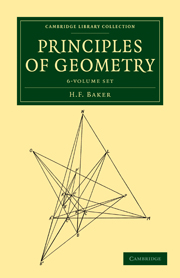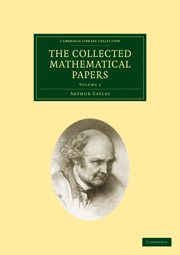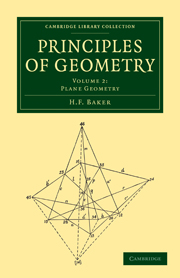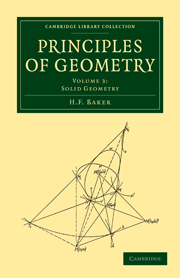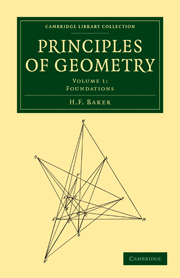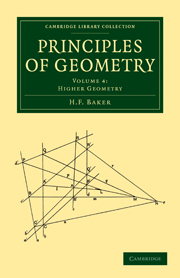Principles of Geometry 6 Volume Paperback Set
Henry Frederick Baker (1866–1956) was a renowned British mathematician specialising in algebraic geometry. He was elected a Fellow of the Royal Society in 1898 and appointed the Lowndean Professor of Astronomy and Geometry in the University of Cambridge in 1914. First published between 1922 and 1925, the six-volume Principles of Geometry was a synthesis of Baker's lecture series on geometry and was the first British work on geometry to use axiomatic methods without the use of co-ordinates. The first four volumes describe the projective geometry of space of between two and five dimensions, with the last two volumes reflecting Baker's later research interests in the birational theory of surfaces. The work as a whole provides a detailed insight into the geometry which was developing at the time of publication.
Product details
October 2010Multiple copy pack
9781108017831
1567 pages
216 × 140 × 97 mm
2.22kg
Temporarily unavailable - available from TBC
Table of Contents
- Volume 1: Preface
- Introductory
- 1. Abstract geometry
- 2. Real geometry
- 3. Abstract geometry, resumed
- Bibliographical
- Index. Volume 2: Preface
- Preliminary
- 1. General properties of conics
- 2. Properties relative to two points of reference
- 3. The equation of a line, and of a conic
- 4. Restriction of the algebraic symbols. The distinction of real and imaginary elements
- 5. Properties relative to an absolute conic. The notion of distance. Non-Euclidean geometry
- Notes
- Index. Volume 3: Preface
- 1. Introduction to the theory of quadric surfaces
- 2. Relations with a fixed conic. Spheres, confocal surfaces: quadrics through the intersection of two general quadrics
- 3. Cubic curves in space. The intersection of two or more quadrics
- 4. The general cubic surface: introductory theorems
- Corrections for volumes 1 and 2
- Index. Volume 4: Preface
- 1. Introductory. Relations of the geometry of two, three, four and five dimensions
- 2. Hart's theorem, for circles in a plane, or for sections of a quadric
- 3. The plane quartic curve with two double points
- 4. A particular figure in space of four dimensions
- 5. A figure of fifteen lines and points, in space of four dimensions and associated loci
- 6. A quartic surface in space of four dimensions. The cyclide
- 7. Relations in space of five dimensions. Kummer's surface
- Corrections to volume 3
- Index. Volume 5: Preface
- 1. Introductory account of rational and elliptic curves
- 2. The elimination of the multiple points of a plane curve
- 3. The branches of an algebraic curve. The order of a rational function. Abel's theorem
- 4. The genus of a curve. Fundamentals of the theory of linear series
- 5. The periods of algebraic integrals. Loops in a plane. Riemann surfaces
- 6. The various kinds of algebraic integrals. Relations among periods
- 7. The modular expression of rational functions and integrals
- 8. Enumerative properties of curves
- Index. Volume 6: Preface
- 1. Algebraic correspondence
- 2. Schubert's calculus. Multiple correspondence
- 3. Transformations and involutions for the most part in a plane
- 4. Preliminary properties of surfaces in three and four dimensions
- 5. Introduction to the theory of the invariants of birational transformation of a surface, particularly in space of three dimensions
- 6. Surfaces and primals in four dimensions. Formulae for intersections
- 7. Illustrative examples and particular theorems
- Index.

